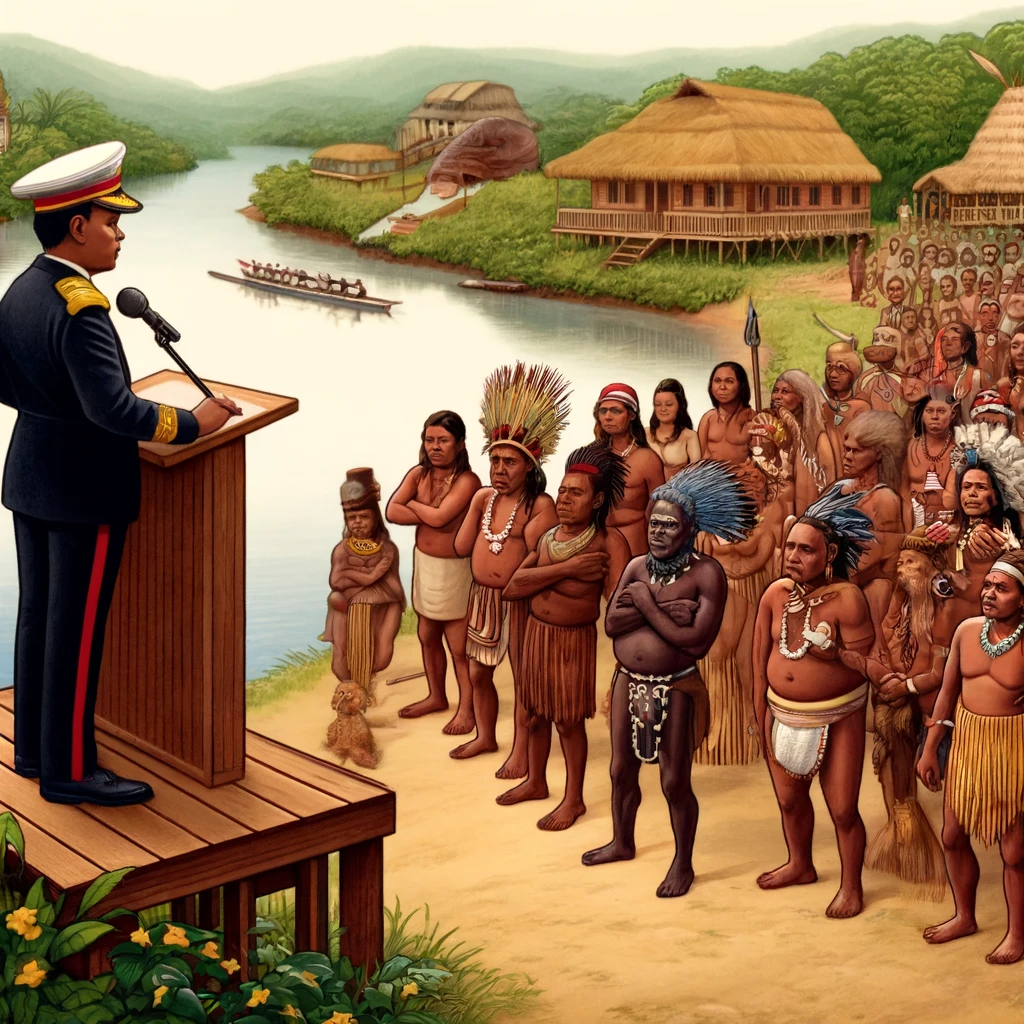I recommend the article written by Ann Usher on ‘Indigenous groups in Guyana raise alarm over historic issuance of carbon credits by Norwegian-funded certifier’, Development Today, 23 December 2022. Available at: https://development-today.com/archive/dt-2022/dt-9-10—2022/indigenous-groups-in-guyana-raise-alarm-over-historic-issuance-of-carbon-credits-by-norwegian-funded-certifier. Development Today describes itself as ‘a free-standing journal covering Nordic aid, produced with no grants from donors or NGOs. Our journalism is funded by readers around the world’.
Ann Usher’s article raises important points of both principle and practice. Her Wapichan informants from southern Guyana relate the usual practice of government agencies for ‘consultations’: little advance notice of a consultation, little or no attempt to explain the subject matter in culturally appropriate language or to distribute consultation documents in advance, long presentations by government staff in unfamiliar language, a brief period for questions, usually no government ability to answer the questions, sometimes but not usually a written answer many weeks later. The process is summed up as ‘we come, we speak, you listen, we go’. Local participants have to sign their names, and provide their ID and/or cell phone numbers, in order to receive the government’s lunch of fried chicken and rice.
The Amerindian Act cap. 29-01 2006, is quite clear about the responsibilities of elected Amerindian Village Councils (AVCs) for the management of titled Amerindian Village Lands (AVLs); see section 14. Village rules and their amendments made under section 14 must be approved by a two-thirds majority vote at a general meeting; see section 15. For untitled customary lands of Amerindians, a Community Council has regulatory powers under part X, sections 85-89. The National Toshaos Council (part IV, sections 38-43) has absolutely no legal right to negotiate the disposition and management of AVLs, but the NTC should prepare strategies and plans; see section 41 (e).
The government of Guyana, and the Guyana Forestry Commission (GFC), have attempted in the past to control the disposition of Amerindian forests. Around 2005-6, the GFC made attempts to licence Asian companies to log forests in the Amerindian customary forests adjoining the communities that make up the North Rupununi District Development Board. All the versions of the Low Carbon Development Strategy (LCDS) from 2009 onwards have a section on the development and operation of an ‘Opt-In’ mechanism by which the AVCs would surrender control over AVLs to the government in exchange for cash payments defined by the government and not open for negotiation. However, I could find no mention of the word ‘opt-in’ in the government’s ‘Fact sheet on Guyana’s engagement in ART TREES, published on 20 December 2022.
In contrast, the second and later versions of the government’s Opt-In concept paper and related documents are explicit in confirming the need for a two-thirds majority vote at a formal village meeting. The Opt-In concept paper was first published in March 2010, even before the second edition of the LCDS in May 2010. The Opt-in Mechanism Strategy was published in October 2014. A purchase agreement (in obscure legal language) was published in May 2017, and the mechanism was again mentioned in a meeting in September 2019 in Guyana with Norwegian Minister Ola Elvestven. Tim Laing (Centre for Global Development working paper 476, February 2018, attached) mentions the Opt-In mechanism 19 times.
Some of the international organizations and personalities that are now promoting the TREES carbon credits issued to Guyana by the Architecture for REDD+ Transactions (ART) likely know about the opt-in mechanism as a result of their long-term and lucrative (to them) association with this line of work. Frances Seymour who is now a Director of Architecture for REDD+ Transactions (ART) which is hosted by Winrock International, was a Senior Fellow at the Center for Global Development based in Washington, DC, where she led policy research on tropical forests and climate change. Winrock International developed the ART process partly from its project on forest biomass and forest carbon in Guyana.
Given this mass of documents, it seems unlikely that Winrock and Aster Global were unaware of the legal rights of the Amerindians to decide on their involvement, or not, in this jurisdictional carbon credit scheme. It could certainly be argued that Hess Corporation did not exercise due diligence in making a purchase of carbon credits which may have included credits estimated but not for sale. Editor, here is a related issue. The legal titles that Amerindians hold to some of their ancestral lands are equivalent to the ‘transport’ to the rice lands or farm lands or house lots held by non-Amerindian Guyanese.
Let’s suppose for a minute that many of the ‘transported’ properties of coastlander Guyanese were forested and that a majority of property owners in a geographical area (e.g., a village) agreed to add their properties to a government scheme to sell carbon credits from the combined forest area. I’d like to meet the Guyanese property owner who would then accept a unilateral decision by the government that payments earned from the sale of carbon credits from the coastlander’s transported forests would be held by the government and that payments to the coastlander property owners would be contingent on the coastlander property owners in a geographic area first preparing and submitting a sustainability plan that the government approved of.
In other words, the coastlander property owners would cede to the government sole decision-making over how, how much, when, and under what conditions, they would get paid, for carbon credits generated from their transported forests. Editor, in law, Amerindians who hold legal communal title to Amerindian Village Lands get to decide on whether they want to join a carbon credits scheme. They should also get direct payments and make their own decisions on how they choose to spend their money. The direct payments to the opted-in Amerindian communities should be the market price (as agreed by Hess Corporation in the current instance), not some arbitrary proportion decided by agencies in Georgetown.
Sincerely,
Janette Bulkan










